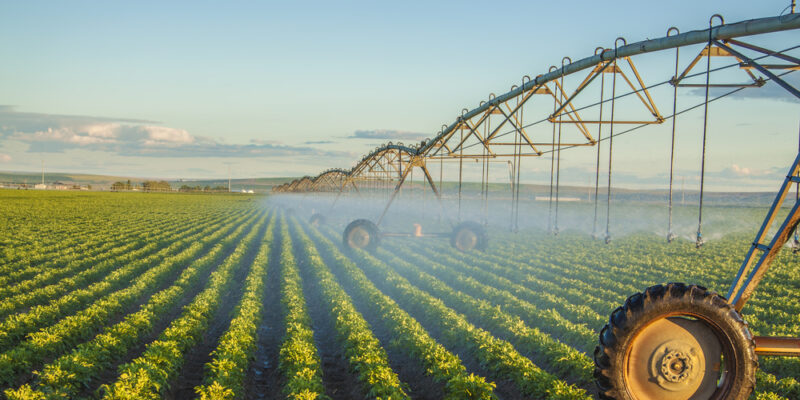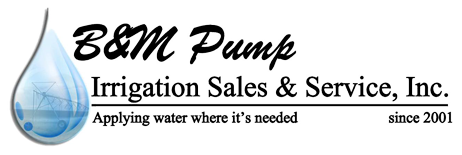
Troubleshooting Common Irrigation System Problems
Maintaining a healthy landscape or ensuring successful crop yield relies heavily on an efficient irrigation system. Whether you’re managing a home sprinkler setup or a commercial pivot system, irrigation problems can be frustrating, waste water, and potentially damage plants or crops. To help, this comprehensive guide explores common issues in irrigation systems, how to diagnose them, and the best irrigation repair tips to restore functionality. Armed with these irrigation system maintenance tips, you’ll be better equipped to keep your system running smoothly all season long.
Understanding Your Irrigation System
Before diving into troubleshooting, it’s essential to understand how your irrigation system works. Most systems, whether for residential or agricultural use, operate on the same principles. They draw water from a source—be it a well, pond, municipal system, or reservoir—and distribute it across the landscape using a combination of pumps, pipes, valves, emitters, and controllers.
Pivot systems, common in agricultural settings, rotate around a central point and water crops in a circular pattern. These systems are highly efficient but are also complex, incorporating electrical components, gearboxes, and span pipes. Home systems, on the other hand, may include drip lines, fixed or rotating sprinklers, and smart controllers that operate on timers or weather-based sensors.
Regardless of system type, problems tend to fall into a few broad categories: water flow issues, electrical failures, mechanical breakdowns, and programming errors. Identifying the root cause is the first step in a successful repair.
Diagnosing Water Flow Issues
Water flow issues are among the most common and frustrating irrigation problems. Low pressure, uneven distribution, or dry patches can all result from disruptions in water flow. Begin troubleshooting by checking the water source—has the pressure changed? Is the pump malfunctioning? In homes, this could be as simple as a partially closed valve or clogged filter.
Blockages in the system can also cause major headaches. Dirt, debris, and mineral buildup in pipes or emitters reduce flow and cause uneven watering. Inspect sprinkler heads and drip emitters for clogs. If you’re using a pivot system, clogged end guns or pressure regulators can lead to inconsistent coverage, particularly at the outer edges.
Leaks, though sometimes less obvious, also disrupt flow and waste water. Walk the irrigation line and listen for hissing sounds or look for overly saturated ground. Cracked pipes, loose fittings, or broken sprinkler heads can all contribute to leaks. Use irrigation repair tips like replacing damaged components, resealing joints with plumber’s tape, or swapping out cracked nozzles to fix the issue.
Addressing Mechanical and Electrical Failures
Mechanical issues, especially in complex systems like pivots, can bring irrigation to a standstill. Gearboxes, motors, and drive shafts wear out over time, and their failure will halt rotation or cause uneven pivot movement. Check for signs of wear like grinding noises, oil leaks, or misaligned wheels. Replacing damaged components is often the only solution, though regular maintenance can delay failure.
In residential systems, mechanical problems often involve sprinkler heads that don’t rotate or valves that don’t open fully. Stuck gears, sediment buildup, or physical damage are common culprits. Cleaning, lubricating, or replacing the affected parts usually solves the problem.
Electrical problems are another significant source of irrigation issues. For pivot systems, faulty wiring, corroded connectors, or blown fuses can cut power to the system or its control panels. Use a multimeter to test circuits and ensure voltage is reaching each component. Always shut off the power before performing repairs to avoid shock.
For home systems, the irrigation controller is often the source of trouble. Power surges, battery failure, or incorrect settings can prevent zones from running correctly. Resetting the controller, replacing the battery, or reprogramming schedules often resolves these problems. Use these irrigation system maintenance tips to periodically test and update controller settings to prevent future malfunctions.
Dealing with Malfunctioning Sprinkler Heads and Emitters
Sprinkler heads and drip emitters are the end points of any irrigation system and are highly susceptible to damage. A single malfunctioning head can cause dry spots or flooding in one area while leaving others parched. It’s important to inspect these components regularly and respond to any signs of failure promptly.
Common problems include heads that won’t pop up, won’t retract, or spray erratically. Often, dirt or debris trapped in the mechanism is the cause. Cleaning out the sprinkler with a soft brush and running water through it can restore proper function. If the head is physically broken or worn, replacement is usually the most efficient solution.
Spray pattern issues can result from misaligned heads or clogged nozzles. Adjust the direction and arc manually to match the desired coverage area. For drip emitters, ensure that the flow rate is appropriate for the plant and that no leaks or blockages are present in the tubing.
In pivot systems, nozzle wear and pressure inconsistencies often affect water distribution. Nozzles should be inspected each season and replaced as needed. Ensuring consistent water pressure throughout the span of the pivot can help maintain even coverage. Pressure regulators and check valves can be used to prevent over- or under-watering across the system.
Preventive Maintenance and Seasonal Care
While fixing irrigation problems is important, preventing them in the first place is even better. A consistent maintenance routine can extend the life of your system and reduce downtime during critical watering periods. Begin each season with a thorough inspection of the system, running each zone or section to check for proper function.
Flush the system to clear out debris and mineral deposits, especially after winter or periods of disuse. Check filters and replace them if they’re worn or clogged. Inspect seals, gaskets, and fittings for wear and apply appropriate lubrication or replacement where needed.
In pivot systems, it’s vital to grease moving parts, check fluid levels in gearboxes, and examine alignment and structural components. Winterization is equally crucial—draining water from pipes and pumps, and protecting control panels from freezing temperatures will prevent costly damage.
Home systems benefit from smart controllers and rain sensors that automatically adjust watering schedules based on weather and soil moisture. These features not only conserve water but also reduce the likelihood of over- or under-watering, two major contributors to landscape damage.
Additionally, create a record of your system’s layout and maintenance history. Knowing the locations of valves, pipes, and heads makes future troubleshooting easier. Log seasonal inspections and repairs, and keep spare parts on hand to make quick fixes when needed.
By applying these irrigation system maintenance tips proactively, you can minimize the risk of system failure and ensure your landscape or crops stay healthy year-round.
When to Call a Professional
Even the most diligent DIY enthusiast will encounter problems that require expert intervention. If you’ve tried all basic irrigation repair tips and the issue persists, it may be time to call in a specialist. This is particularly true for complex pivot system malfunctions involving electrical or hydraulic components that require specialized tools and expertise.
Leaks that are underground or affecting your water bill significantly also warrant professional diagnosis. Likewise, if your entire system isn’t responding despite functioning power and controller signals, a technician can help isolate the issue quickly and efficiently.
A licensed irrigation professional can perform a full audit of your system, identifying inefficiencies, outdated components, or design flaws that could be costing you time, water, and money. They can also help you upgrade to more modern, water-saving technologies like pressure-regulated heads, flow sensors, and smart irrigation controllers.
Calling in a pro for annual checkups or system redesigns is an investment in long-term reliability. It ensures that your irrigation setup evolves with your needs and stays compliant with local water-use regulations.
Ultimately, while many irrigation problems are within reach for the average homeowner or farmer, knowing when to call for help can save valuable resources and prevent further damage.
Conclusion
Maintaining an efficient and effective irrigation system is essential for achieving optimal landscape health or agricultural productivity. By understanding the inner workings of your system, being alert to common warning signs, and implementing these irrigation system maintenance tips regularly, you can avoid many common pitfalls. Whether you’re managing a home sprinkler network or a full-scale pivot system, these irrigation repair tips will help you troubleshoot effectively, extend the lifespan of your equipment, and conserve one of our most precious resources—water.
Need an Irrigation System Company in Seminole, TX?
Welcome to B&M Pump Irrigation Sales & Service, Inc.! We are your professional irrigation specialist! Our typical services include complete pump service, water well service, system design, and pivot systems. We deliver personal service and reliability to our customers in Texas, Oklahoma, New Mexico, and Arizona. No matter where you are in the southwest, B&M Pump Irrigation Sales & Service, Inc., is a name you can trust. We strive to educate owners and operators on making pumps and motors last longer and work more efficiently. We sell good quality products at a fair price and stand behind the products we sell. Give us a call today to speak with one of our service experts today!
Categorised in: Irrigation
